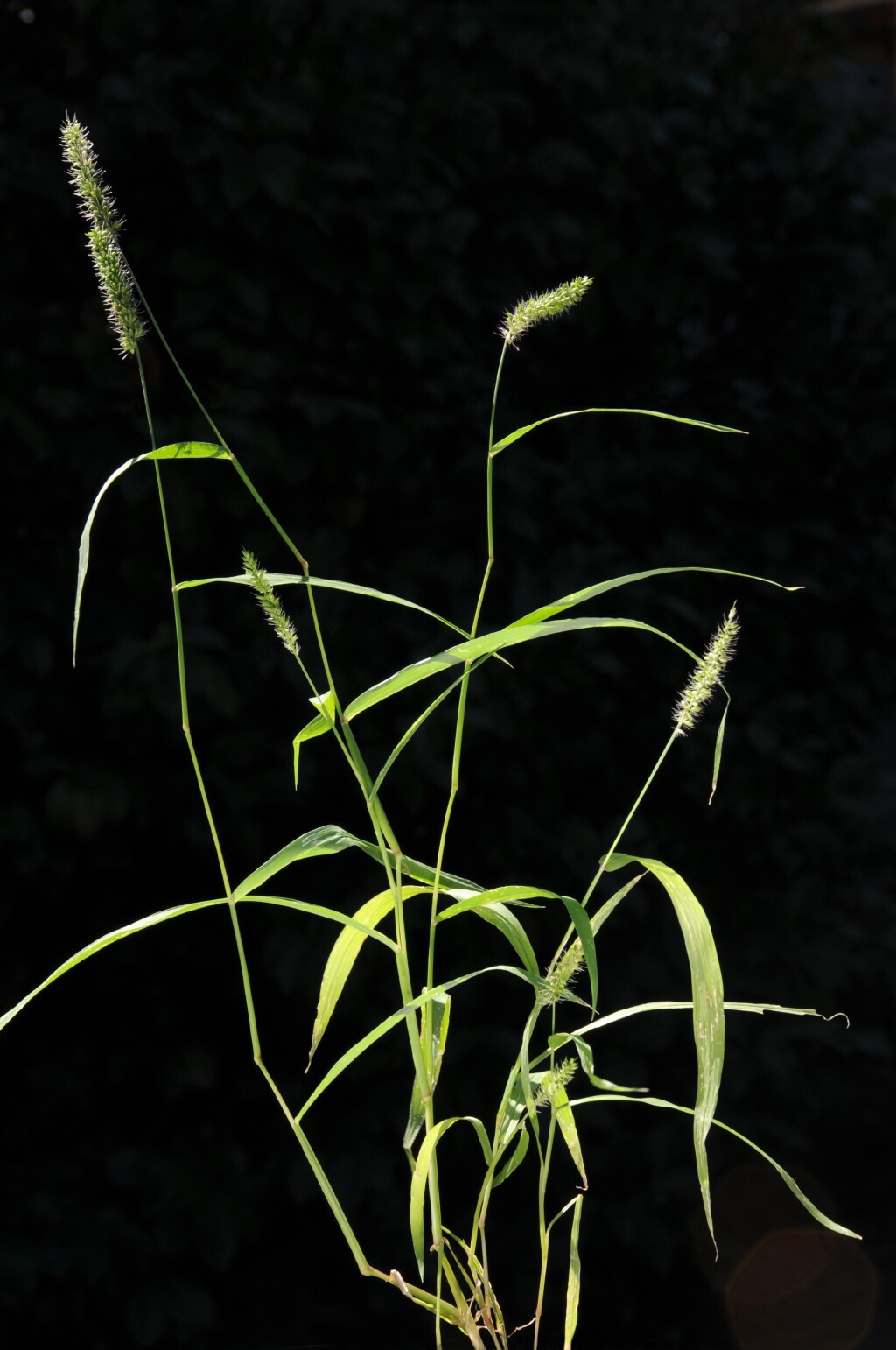Setaria verticillata
(L.) P.Beauv. Whorled Pigeon-grassTufted annual. Culms erect or geniculate at base, to 1 m high. Leaves glabrous or sprinkled with hairs; blade flat, scabrous, to 25 cm long and 12 mm wide; ligule 1–2 mm long. Panicle cylindrical, 3–12 cm long, sometimes interrupted near base, branches to 10 mm long, or not developed. Spikelets blunt, 1.7–2.4 mm long, most subtended by a single, retrorsely barbed bristle, 3–15 mm long; lower glume 1–3-nerved, ovate, from one-third to one-half as long as spikelet; upper glume 5–7-nerved, elliptic, obtuse, sub-equal or equal to spikelet; lower floret neuter, its lemma equal to spikelet, its palea rudimentary; fertile lemma obtuse, equal to spikelet, dorsally rounded, granular, sometimes obscurely transversely ridged Flowers Jan.–May.
MuM, Wim, GleP, VVP, VRiv, MuF, GipP, OtP, Gold, CVU, DunT, NIS, EGU, HSF. Naturalized in all States. Native to warmer Northern Hemisphere countries and widely introduced. In Victoria, an occasional weed of settled areas but uncommon the east.
Setaria verticillata var. ambigua (Guss.) Parl. differs from the typical variety in having antrorsely barbed bristles. It is not clear how this variety differs from S. viridis.
Walsh, N.G. (1994). Poaceae. In: Walsh, N.G.; Entwisle, T.J., Flora of Victoria Vol. 2, Ferns and Allied Plants, Conifers and Monocotyledons, pp. 356–627. Inkata Press, Melbourne.
 Spinning
Spinning



